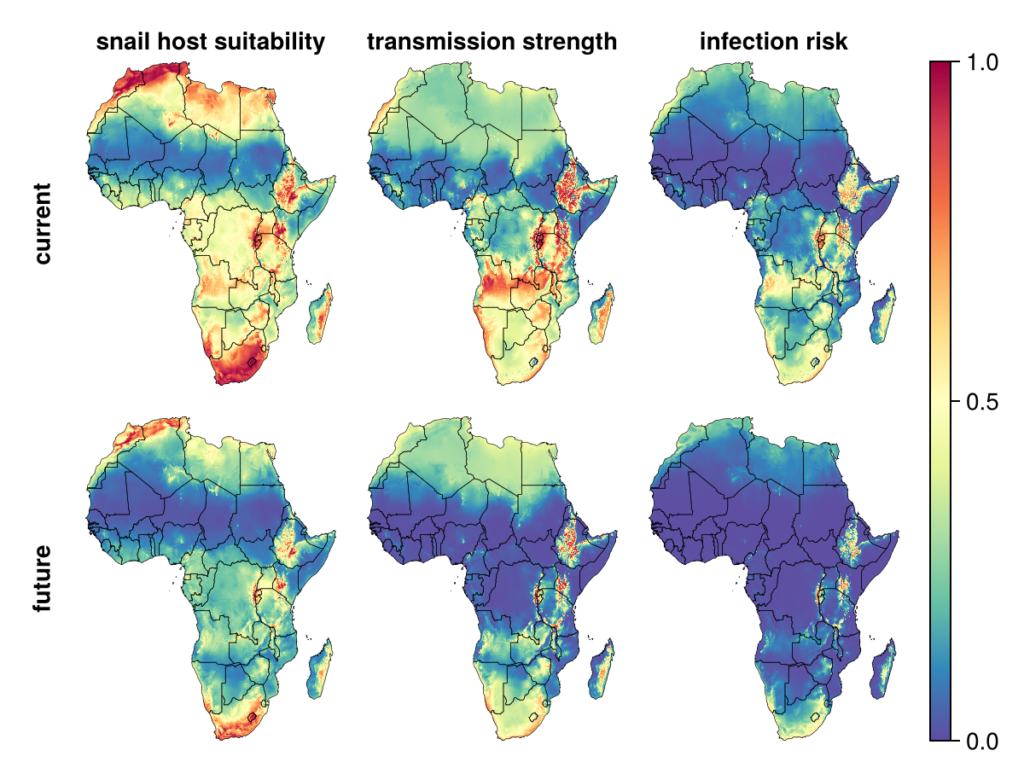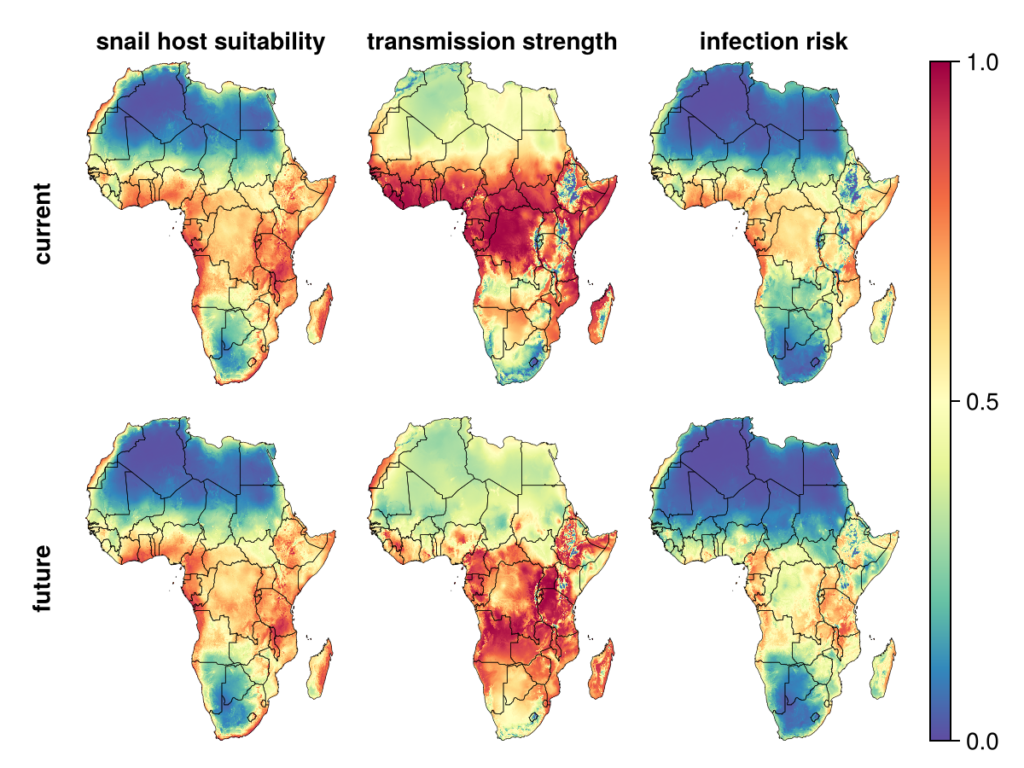Risk maps for Fasciola hepatica and Fasciola gigantica
About these maps
Fasciola parasites, known as liver fluke, are snail-borne parasites that cause disease in domestic animals, wildlife, and humans. Fasciola parasites have a complex life cycle with a mammalian and snail host. After hatching from eggs, Fasciola larvae (miracidiae) infect snails, where they further develop and reproduce. The next stage, cercariae, then attach to vegetation, where they can be ingested by mammals.
The life cycle is highly sensitive to environmental conditions. At low temperatures, Fasciola eggs cannot develop, whereas too dry or hot conditions might be disadvantageous to the snail intermediate host.
There are two major species of Fasciola. Fasciola gigantica is restricted to tropical areas, whereas Fasciola hepatica is found in temperate areas.
PREPARE4VBD has developed risk maps for both of these species under current and future climatic conditions.¹ To generate these risk maps, occurrence records of the main snail intermediate hosts² were used to infer their climatic requirements (host suitability – left columns). Then, life history data of Fasciola parasites was used to estimate the temperature requirements for transmission (transmission strength – middle column). The product of these is an infection risk index that highlights areas where temperatures are suitable for transmission, and conditions are favourable for Fasciola hosts (infection risk – right column).
Fasciola hepatica

Fasciola gigantica

¹ Climate change data used are Worldclim reanalysis products. The historical climate data is for the period 1970-2000 and future climate projections by GFDL’s ESM4 is for 2081-2100 under the SSP370 scenario. The spatial resolution used is 2.5 minutes. All data are availabe at https://www.worldclim.org/.
² Galba truncatula for Fasciola hepatica and Radix natalensis for Fasciola gigantica

